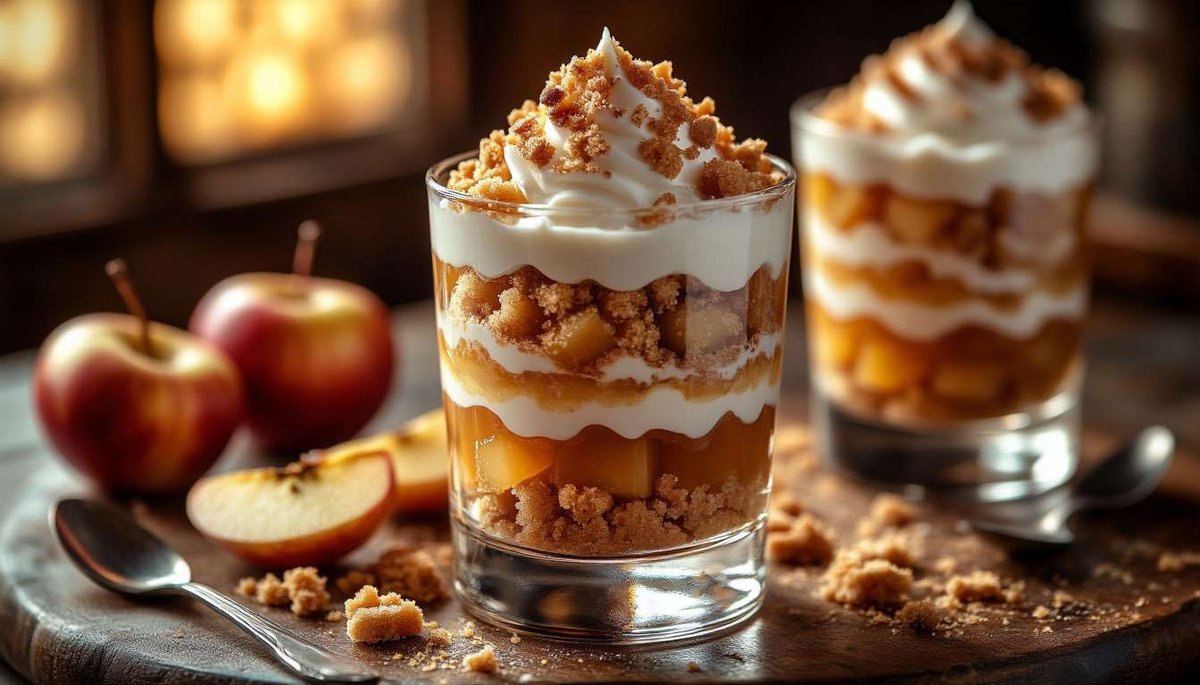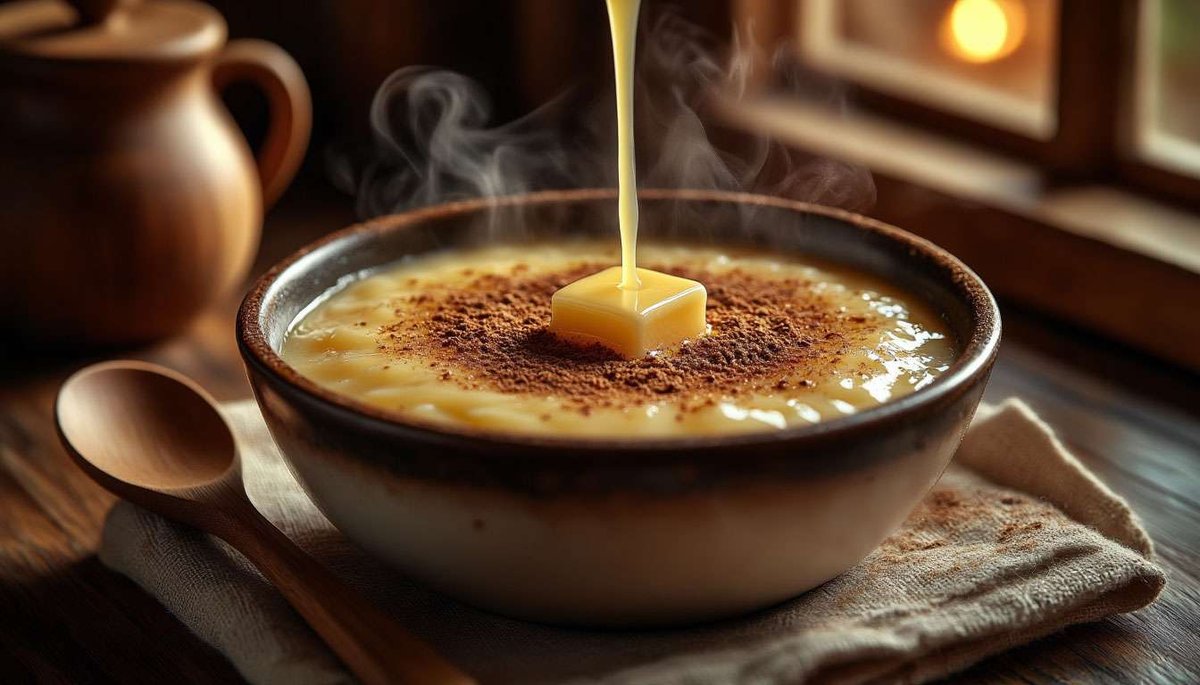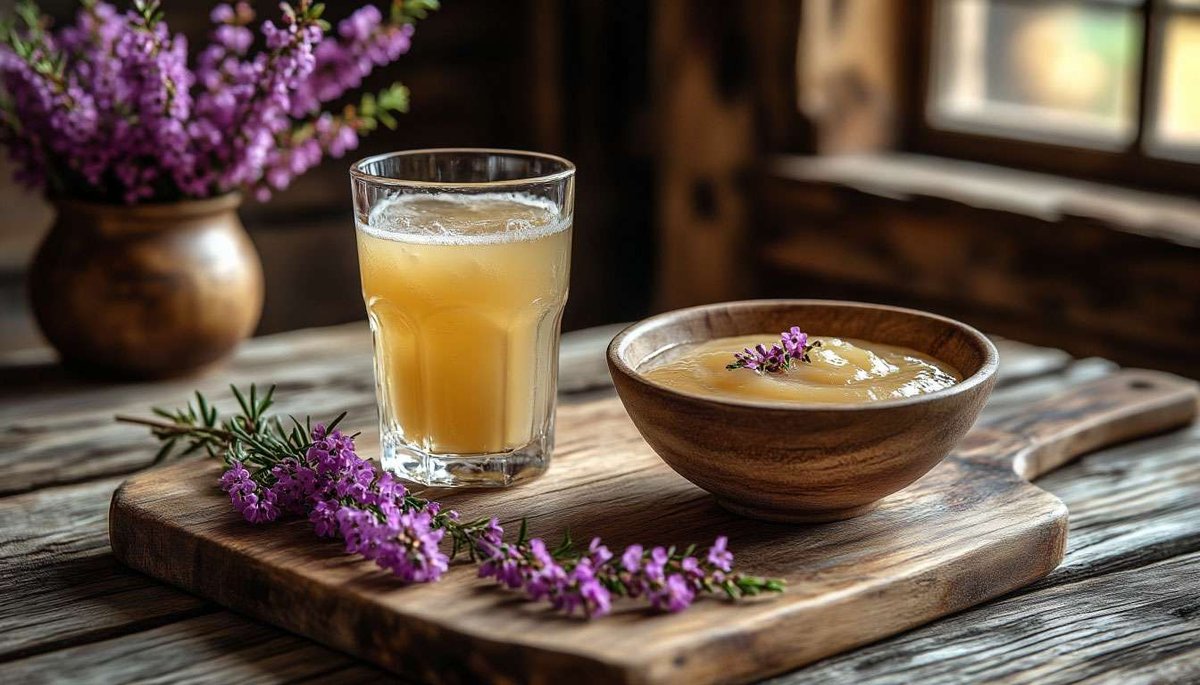Tilslørte Bondepiker and Rømmegrøt: "peasant girls in headscarves" and creamy porridge — heartwarming desserts from rural Norway

Norwegian cuisine has a knack for turning humble ingredients into gastronomic treasures. Two striking examples are the layered dessert Tilslørte Bondepiker ("peasant women in bonnets") and the warm, creamy porridge Rømmegrøt. Both dishes originated in peasant homes, but today they are served in New Nordic restaurants as the embodiment of the "smart minimalism" of the North. Find out why apple purée, breadcrumbs and sour cream can outshine elaborate cakes and how you can recreate the cosiness of a northern farm in your own kitchen.
How did the name Tilslørte Bondepiker come about and what do the "covers" symbolise?
At the beginning of the 20th century, housewives in Western Norway would layer leftover apple purée, rusks and cream in glasses, covering the purée with a "veil" of whipped cream. The dessert reminded guests of a peasant girl whose rosy cheeks (apple) were hidden under a white cap (cream). This is how the playful name "Peasant Girls in a Cover" came about.
What is the secret of the texture and taste of Tilslørte Bondepiker?
Three contrasts:
- Sweet and sour apple purée made from local autumn varieties (Aroma, Gravenstein).
- Crunchy caramel crumbs — breadcrumbs or bread fried in butter with sugar and cinnamon.
- Silky cream — full-fat rømme or whipped cream 35%.
When served, the spoon captures all the layers at once: the crunch breaks in your mouth, the juicy sweet and sour juice mixes with the coolness of the cream.
Why is Rømmegrøt called "holiday porridge" and how is it prepared?
Rømmegrøt is cooked in summer on mountain farms when the milk is particularly rich. Rømme (35%), cream, a little flour and salt are simmered in a saucepan until the butter separates; the excess butter is skimmed off and served separately. The hot porridge is sprinkled with a mixture of sugar and cinnamon and drizzled with melted "setter" butter. The dish is served on St. Hans Day (23 June) and at summer fairs, where it symbolises gratitude to cows for their rich milk during the season.

How to make both desserts at home?
Tilslørte Bondepiker (4 servings)
- 400 g apple purée (sour-sweet apples, 10 g sugar, a pinch of cinnamon).
- 80 g breadcrumbs, 40 g butter, 40 g sugar, 1 tsp cinnamon.
- 300 ml cream 35% (or 200 ml cream + 100 ml seterrømme), 1 tbsp powdered sugar.
Fry the breadcrumbs with butter, sugar and cinnamon until caramelised. Whip the cream with the powdered sugar. Layer: mashed potatoes → breadcrumbs → cream, repeat, finish with cream. Serve immediately so that the crunch does not become soggy.
Rømmegrøt (4 servings)
- 500 ml sour cream, 250 ml cream (20%), 150 g wheat flour, 300 ml whole milk, 1 tsp salt.
Simmer the rømme and cream for 15 minutes over low heat, stir in 50 g of flour until the butter separates. Remove the butter and keep warm. Gradually add the remaining flour and milk until the consistency is thick like sour cream. Season with salt, serve in deep bowls, drizzle with the reserved butter and sprinkle with a mixture of sugar and cinnamon.

Where in Norway can you try the best versions?
- Oslo — Restaurant Fjord offers Tilslørte Bondepiker with malt crumbs.
- Bergen — Bryggen Tracteursted: a classic with apples from Hardanger.
- Lom — Bakeriet i Lom bakery: summer Rømmegrøt served outdoors.
- Rørosmartnan Fair (February, Røros) — tasting of Rømmegrøt made from organic rømme.
What drinks go well with these desserts?
Tilslørte Bondepiker — brut apple cider or light Riesling; Rømmegrøt — black coffee, sweet gløgg or "lefse aquavit" with spices. The tartness of the drinks balances the richness of the desserts, highlighting the taste of milk and apples.
Tilslørte Bondepiker and Rømmegrøt are a story of how modest village cellar supplies are transformed into a warming dessert that can still compete with trendy mousses today. In one spoonful, you get southern apples, northern butter and the warmth of a mountain hearth. Make them at home or try them at the fair in Røros, and you will feel the leisurely rhythm of the Norwegian countryside enter your kitchen, filling it with the aroma of cinnamon, cream and the warm heritage of the North.





2 comments
Log in to leave a comment